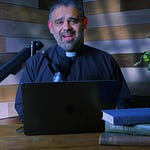Christmas vs. Advent Hymns
Starting on December 25th, there is a shift in our hymnody. Granted, many folks have already begun their Christmas caroling right during Advent. But for a few of us, more persnickety types, we patiently wait to sing them on the 12 magic days during Wine-Tasting parties, Christmas parties, Sunday worship, and hospitality. One of the reasons there is so much confusion between these two seasons is that evangelicals have a low repertoire of Advent/Christmas hymns. They easily exhaust the Advent selection and quickly jump into “Joy to the World.” In this manner, we are no different than our pre-Thanksgiving Christmas music at the local Walmart. But this is a conversation for another time. But before we develop a healthy resume of Advent/Christmas hymnody, we need to know how these two seasons distinguish themselves theologically.
Advental and Christmas Theology
Advent hymns look to Israel’s future Messiah. It plays on the prophetic declarations of a child who would come to bring hope and light to Israel’s despair and darkness. Isaiah 40 summarizes that Advent theme: “Comfort those who sit in darkness, bowed beneath their sorrow’s load; speak ye to Jerusalem, of the peace that waits for them; Tell her that her sin I cover, and her warfare now is over.” Advent hymns are almost exclusively about Israel’s redemption. It tells of the promise of a Savior who would change Israel’s history. They speak deeply about the longing of the people who sat in darkness.
A classic example comes from the tune Stuttgart:
Come, Thou long-expected Jesus,
Born to set Thy people free;
From our fears and sins release us,
Let us find our rest in Thee.
On the other hand, Christmas hymns change the tone and tune. It carries a more marching-like motif. In Christmas hymns, Jesus comes to rule the world with truth and grace. An inherent political theme emerges during Christmas tide:
“This little babe so few days old is come to rifle Satan’s fold…”
Or,
“Joyful, all ye nations, rise, join the triumph of the skies…”
Christmas hymns bring forth the political and universal implications of Jesus’ earthly arrival. They speak to the reality of a new world where Christ’s earthly presence becomes a direct threat to the principalities and powers of the age.
Advent hymns aim to shape our imagination as those in Israel’s history. In contrast, Christmas hymns have an objective desire to shape our imagination through the triumph of Jesus in the entire world. That’s why Christmas hymns will ordinarily not refer to Israel because Christmas is universal in scope.
Christ has come, and the world is called to kneel before him: Herods and Pilates.
We will complete this season and enter the first Sunday of Christmas to sing of the arrival of Messiah Jesus who will put the world to right and bring blessings as far as the curse is found!
Notations
In The Fabricated Luther, Peter Berger observes that once clichés become part of people's minds, they function as a form of “taken-for-granted truth,” which is difficult to dislodge. If a cliché meets a people's social or psychological needs, then that cliche becomes even more entrenched.
Berger notes that the Lutheran Church’s cowardly acceptance of Hitler’s dogma was not a failure of Lutheran theology, for even Roman Catholics also failed to grasp the horrors being perpetrated at the time. The assertion that Luther’s theology of the Doctrine of Two Realms, more commonly known as Classical Two-Kingdom theology, is the primary culprit of the Lutherans’ acceptance of the Third Reich is far from the truth.
The pursuit of utopian models is what drove Nazi Germany. Berger makes the case that it wasn’t Luther’s doctrine that led to the Nazi regime, but instead, Thomas Munzer. Berger notes:
“Thus we have feminist utopias, environmentalist utopias (closely allied with what some have called “health fascism”), multiculturalist utopias. And every one of them has attached to it regiments of Christian theologians, clergy, and lay activists who proclaim the urgent Christian imperative of enlisting under this particular banner.”((The Fabricated Luther: Refuting Nazi Connections and Other Modern Myths, Third Edition))
There is a priesthood attached to all these utopian models. Thus, it is conceivable that each tyrannical movement recruits its clergy willing to follow the wishes and whims of their masters. They become a sub-class of false shepherds happily submitting to the demands of their lords for 30 pieces of silver. They become ambassadors of whatever social or political cause that pays the most.
The thesis of the book is that many have associated Luther’s theological paradigms 400 years earlier with what occurred in Nazi Germany. The author, Uwe Siemon-Netto, skillfully shatters conceptions that Luther’s influence created the party and its demonic practices.
Confederates in Brazil
I have always been fascinated by the Confederate soldiers who fled to Brazil in the 1860s. The interview is with a descendant of those American soldiers, and his English is still sharp after 140 years since his forefathers came to my home country.
AD Robles on the Statement on Natural Affections
It’s hard not to love AD!
Advent Blessings,
Uriesou T. Brito
FOLLOW ALONG
FACEBOOK / X / YOUTUBE / INSTAGRAM
PODCAST / KUYPERIAN / SUBSTACK











